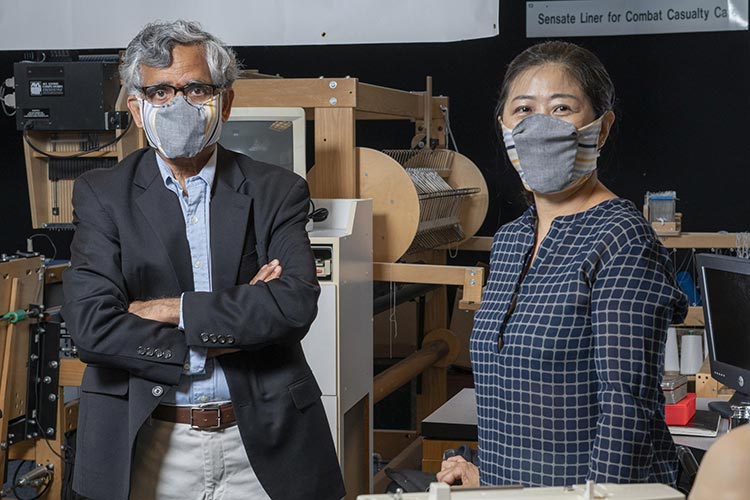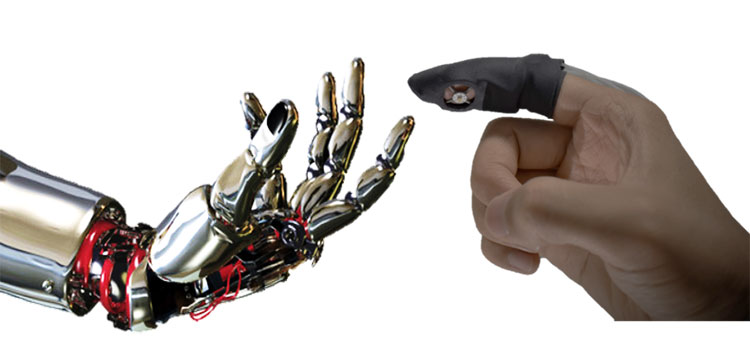Imagine a reusable face mask that protects wearers and those around them from SARSCoV-2,
but is comfortable enough to wear all day, and stays in place without frequent adjustment. Based on decades of experience with filtration and textile materials, Georgia Institute of Technology researchers have designed a new mask intended to do just that – and are providing the plans so individuals and manufacturers can make it.
The fundamental flaw in existing reusable cloth masks is that they – unlike N95 respirators, which are fitted for individual users – leak air around the edges, bypassing their filtration mechanism. To address the issue, researchers created a two-part mask that fastens behind the head.

The front part – the barrier component – contains the filtration material and is contoured to fit tightly while allowing space ahead of the nose and mouth to avoid breathing restrictions and permit unrestricted speech. Made from the kind of moisture-wicking material used in athletic clothing, it includes a pocket into which a filter can be inserted to increase the filtration efficiency and thereby increase protection. The washable fabric filter is made of a blend of Spandex and polyester.
The second part of the mask is fashioned from stretchable material. The stretchable part, which has holes for the ears to help position the mask, holds the front portion in place and fastens with conventional hook and eyelet hardware, a mechanism that has been used in clothing for centuries.
New Glove-like Device Mimics Touch
What if you could touch a loved one during a video call – particularly in today’s social distancing era of COVID-19 – or pick up and handle a virtual tool in a video game? Pending user tests and funding to commercialise the new technology, these ideas could become reality in a couple of years after UNSW Sydney engineers developed a new haptic device which recreates the sense of touch.

Dr Thanh Nho Do, Scientia Lecturer and UNSW Medical Robotics Lab director, is senior author of a study featuring the new device. His research team featured lead author and PhD candidate Mai Thanh Thai, Phuoc Thien Phan, Trung Thien Hoang and collaborator Scientia Professor Nigel Lovell, Head of the Graduate School of Biomedical Engineering.
Dr Do said the sense of touch was something many people took for granted to perform everyday tasks. “There are many situations where the sense of touch would be useful but is impossible: for example, in a telehealth consultation a doctor is unable to physically examine a patient. So, we aimed to solve this problem.”
Electronic Media Usage Affects Academic Performance
Heavy electronic media use in late childhood linked to lower academic performance. A new study of 8- to 11-year olds by Lisa Mundy of the Murdoch Children’s Research Institute in Melbourne, Australia, and colleagues, reveals an association between heavy television use and poorer reading performance, as well as between heavy computer use and poorer numeracy – the ability to work with numbers.

Mundy and colleagues studied 1,239 8- to 9-year olds in Melbourne, Australia. They used a national achievement test data to measure the children’s academic performance at baseline and again after two years. They also asked the children’s parents to report on their kids’ use of electronic media.
The researchers found that watching two or more hours of television per day at the age of 8 or 9 was associated with lower reading performance compared to peers two years later; the difference was equivalent to losing four months of learning. Using a computer for more than one hour per day was linked to a similar degree of lost numeracy. The analysis showed no links between the use of videogames and academic performance.

